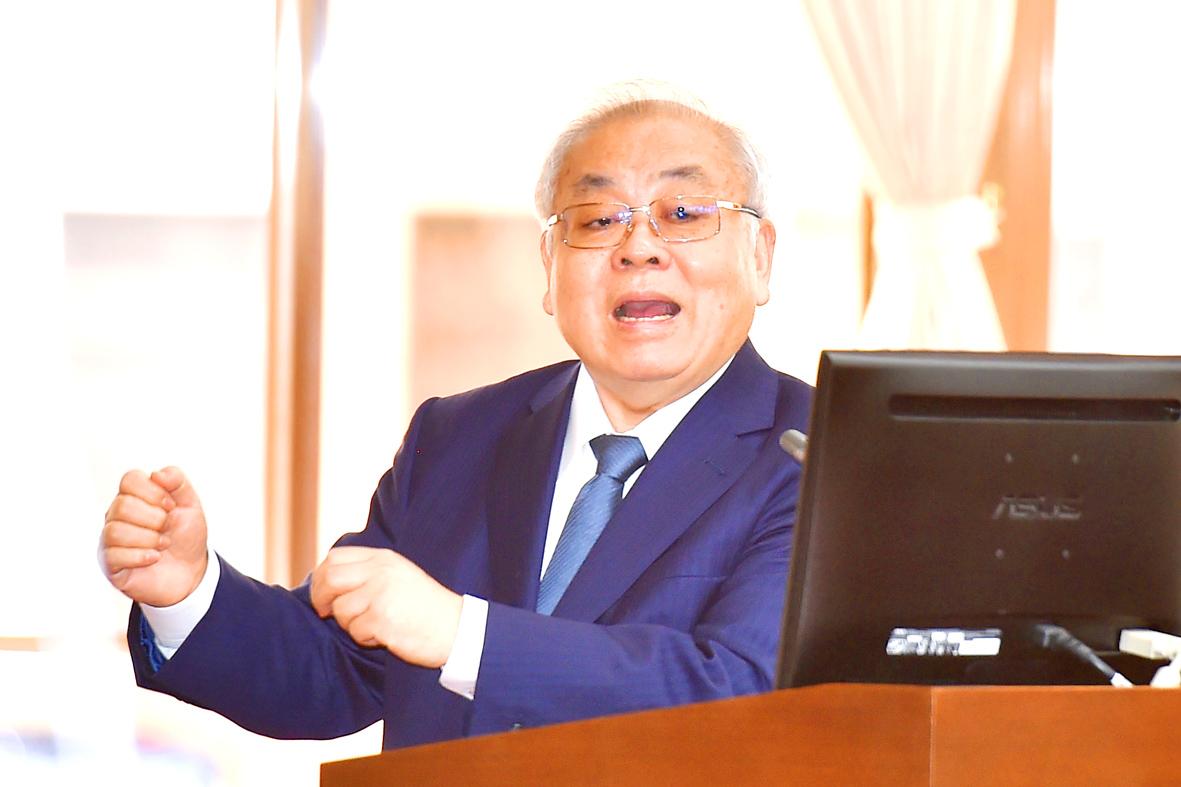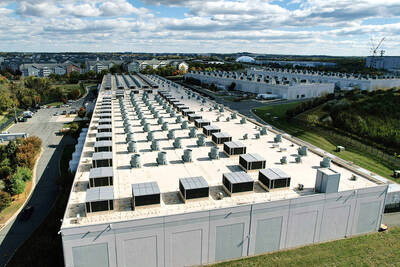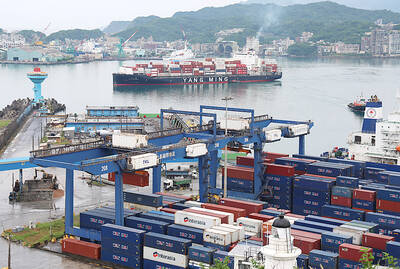Government officials yesterday dismissed an IMF forecast that Taiwan’s GDP would contract by 4 percent this year, saying that the nation’s economy would continue to grow by 1.3 to 1.8 percent.
Directorate-General of Budget, Accounting and Statistics (DGBAS) Minister Chu Tzer-ming (朱澤民) made the assertion one day after the IMF released its World Economic Outlook report, which forecast that Taiwan’s GDP would decline amid a global recession.
“There is no need to take the [IMF] forecast seriously, as the international research body has failed to factor in the government’s NT$1.05 trillion [US$34.96 billion] program to mitigate the effects of the [COVID-19] pandemic,” Chu told reporters.

Photo: Tu Chien-jung, Taipei Times
The IMF also does not have the latest figures on Taiwan’s economic performance, as the DGBAS is to disclose first-quarter figures on April 30, he said.
The economy would remain in expansion mode this year, with growth of 1.3 to 1.8 percent, nearly 50 percent less than the agency’s prediction in February of 2.37 percent, he added.
The landscape has deteriorated significantly following the spread of the novel coronavirus across Europe and the US, leading governments worldwide to introduce travel restrictions and shut down non-essential businesses, Chu said.
Taiwan is susceptible to reduced global trade flows, but has been resilient thanks to a low number of infections, diminished dependence on Chinese tourists and the government’s quick response, he said.
The National Development Council said the IMF forecast reflected a lack of understanding of the nation’s economic situation.
The impact of the pandemic on the Taiwanese economy is much more controllable than in other Asian countries, because Taiwan has managed to minimize infections without invoking draconian isolation measures, the council said.
Manufacturing companies in Taiwan have maintained normal operations and a considerable number have reported order transfers from peers trapped by lockdowns elsewhere, it said.
Excluding special loans, relief and stimulus measures are to total NT$350 billion this year, accounting for 1.8 percent of GDP, that would help keep the economy growing and outperforming major trade rivals, as well as the regional and global average, the council said, adding that it would make sure budgets for public works are executed effectively.
Major economic data lent support to the government’s argument.
Exports in the first quarter expanded 3.7 percent, while imports increased 3.5 percent, faster than official projections of 2.19 percent and 1.85 percent respectively.
The IMF forecast that the world economy would contract by 3 percent this year, induced in part by concerted government efforts to combat the pandemic, before rebounding by 5.8 percent next year.
This story has been corrected since it was first published, which incorrectly stated in the fourth paragraph from the bottom that "Special loans as well as relief and stimulus measures are to total NT$350 billion this year." The online version of this story has been corrected into that "Excluding special loans, relief and stimulus measures are to total NT$350 billion this year."

The demise of the coal industry left the US’ Appalachian region in tatters, with lost jobs, spoiled water and countless kilometers of abandoned underground mines. Now entrepreneurs are eyeing the rural region with ambitious visions to rebuild its economy by converting old mines into solar power systems and data centers that could help fuel the increasing power demands of the artificial intelligence (AI) boom. One such project is underway by a non-profit team calling itself Energy DELTA (Discovery, Education, Learning and Technology Accelerator) Lab, which is looking to develop energy sources on about 26,305 hectares of old coal land in

Taiwan’s exports soared 56 percent year-on-year to an all-time high of US$64.05 billion last month, propelled by surging global demand for artificial intelligence (AI), high-performance computing and cloud service infrastructure, the Ministry of Finance said yesterday. Department of Statistics Director-General Beatrice Tsai (蔡美娜) called the figure an unexpected upside surprise, citing a wave of technology orders from overseas customers alongside the usual year-end shopping season for technology products. Growth is likely to remain strong this month, she said, projecting a 40 percent to 45 percent expansion on an annual basis. The outperformance could prompt the Directorate-General of Budget, Accounting and

Netflix on Friday faced fierce criticism over its blockbuster deal to acquire Warner Bros Discovery. The streaming giant is already viewed as a pariah in some Hollywood circles, largely due to its reluctance to release content in theaters and its disruption of traditional industry practices. As Netflix emerged as the likely winning bidder for Warner Bros — the studio behind Casablanca, the Harry Potter movies and Friends — Hollywood’s elite launched an aggressive campaign against the acquisition. Titanic director James Cameron called the buyout a “disaster,” while a group of prominent producers are lobbying US Congress to oppose the deal,

Two Chinese chipmakers are attracting strong retail investor demand, buoyed by industry peer Moore Threads Technology Co’s (摩爾線程) stellar debut. The retail portion of MetaX Integrated Circuits (Shanghai) Co’s (上海沐曦) upcoming initial public offering (IPO) was 2,986 times oversubscribed on Friday, according to a filing. Meanwhile, Beijing Onmicro Electronics Co (北京昂瑞微), which makes radio frequency chips, was 2,899 times oversubscribed on Friday, its filing showed. The bids coincided with Moore Threads’ trading debut, which surged 425 percent on Friday after raising 8 billion yuan (US$1.13 billion) on bets that the company could emerge as a viable local competitor to Nvidia